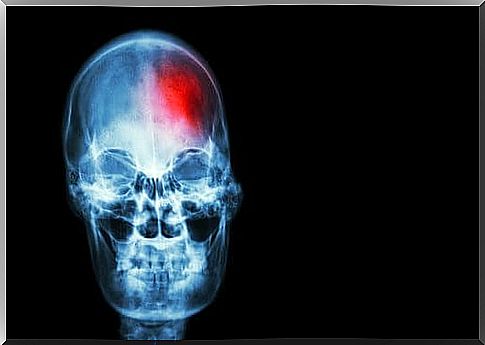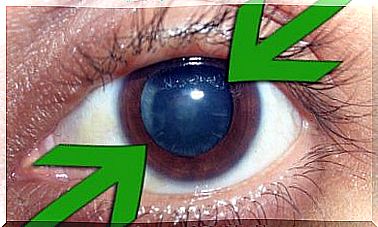Signals That Portend A Cerebral Hemorrhage
To be able to prevent a cerebral hemorrhage as early as possible and prevent its consequences from worsening, we must know its symptoms early and not underestimate any signs .

The risk of suffering from it increases if you smoke, drink excess alcohol and are exposed to stress.
In this article, we will explain to you what are the warning signs that can give us clues about the onset of a stroke.
What to know about cerebral hemorrhage?
When blood does not flow properly to the brain, cells do not receive the nutrients and oxygen they need to function and die.
Cerebrovascular disease is the third leading cause of death in the Western world and the leading cause of permanent disability. It is also one of the triggers of neurological deficit in the elderly.
Cerebral hemorrhage or stroke is classified into several categories, depending on the brain area affected:
Ischemia
Also called an occlusive attack or cerebral infarction, it occurs when the blood supply to the brain suddenly stops.
It is due to the occlusion of certain arteries responsible for carrying blood to the encephalic mass. This can be caused by calcium build-up, embolism, or arteriosclerosis.
Bleeding
It is when an encephalic blood vessel ruptures, whether due to a congenital aneurysm or a spike in hypertension.
This bleeding leads to a stroke because it robs the area of the brain of blood flow or because the blood puts pressure on the structures of the brain.
After the clot has been removed, it takes between 24 and 48 hours to determine which area was affected.
How to detect a brain hemorrhage?
Regardless of the cause or type of stroke, it is always a medical emergency as it occurs suddenly and within minutes can cause serious and permanent damage.
Depending on the amount of blood involved, it can be mild or severe bleeding.
The severity of the damage can vary depending on how quickly you get medical help, and that is why it is extremely important to be alert to the warning signs.
If you are more likely to have a stroke, you should pay more attention to the following signs:
Nausea and problems walking
- Since the blood flow to the brain has decreased, you may feel nausea suddenly.
- You may also feel a lack of balance or coordination, and stumble or even fall.
- Any movement that requires attention will be affected.
Brittleness or numbness
You can no longer raise your arms (one or both at the same time) and you can no longer hold them in the air.
You also feel drowsy or have difficulty lifting an object, no matter how light.
A lot of people drop what they have in their hand because they can no longer carry it.
In addition, the tingling or numbness of the legs does not help: you have to sit down and be still for a few seconds, because no extremity responds.
Problems with speaking
Confusion arises not only when we want to walk or move, but also when we want to express ourselves.
Searching for words, not being able to find the right terms to explain something, or to say inconsistencies can be signals of brain hemorrhage.
Facial paralysis
Beyond not being able to express yourself easily, you will see that part of your face freezes.
If you’ve ever been to the dentist and they’ve given you anesthesia to remove a molar tooth, you’ve probably felt something similar. You cannot smile or open one of the two eyes. Almost every time the paralysis is on one side of the face.
We must also add the visual problems due to the stroke, such as blurred, cloudy, double or dark vision.
Intense migraine
We have all had headaches, even very severe ones. But in the face of a brain hemorrhage, the migraine is so intense that it prevents you from doing anything.
It appears suddenly and is accompanied by nausea and vomiting. In some cases (when it’s a hemorrhagic stroke) it can even cause fainting.
The main characteristic of these signals is that they can appear without the person noticing. Others will think that the individual is distracted, tired, confused or even drunk.
When the symptoms appear for a few seconds or minutes and they disappear, it is a transient stroke. But it should not be underestimated for all that.
This is a clear signal that the blood is not getting to the brain properly and in the future you could have a serious stroke.
In any case, it is best to call medical emergencies and seek a diagnosis from professionals.
Many nurses or rescuers do an in situ test known as FAST, which stands for Face Arm Speech Test.
It has three parts:
- The face: Analyze whether there is an involuntary muscular asymmetry on the facial features.
- The arms: Whether or not the patient can voluntarily move the arms, or if they experience tingling and numbness.
- Speech: Ask a series of questions to determine if he has difficulty speaking or if his voice appears to be that of an alcoholic or drug addict.









